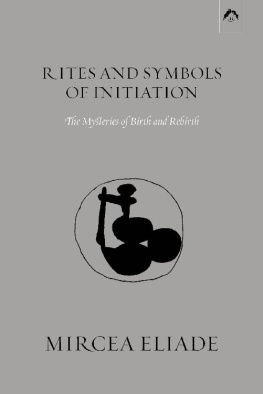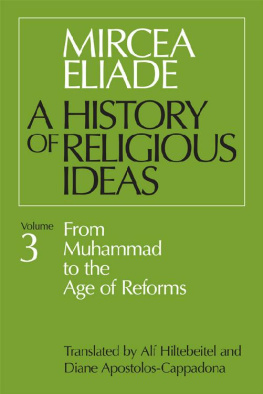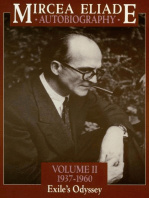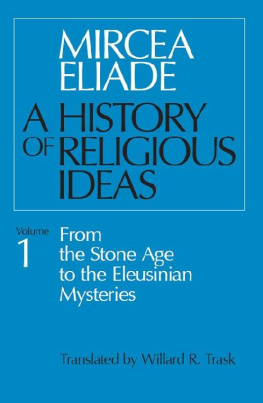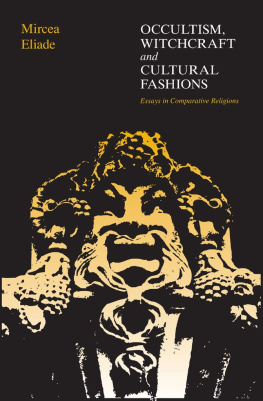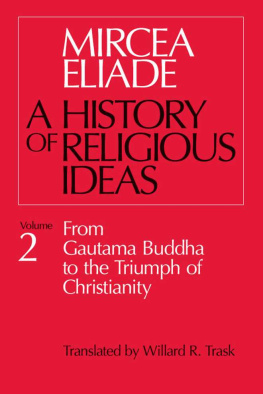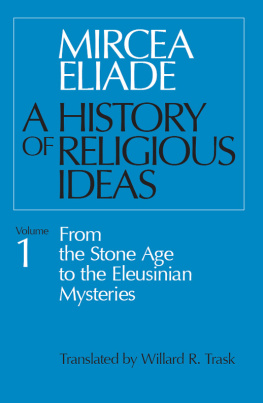Introduction
The extraordinary interest aroused all over the world by Rudolf Ottos Das Heilige, published in 1917, still persists. Its success was certainly due to the authors new and original point of view. Instead of studying the ideas of God and religion, Otto undertook to analyze the modalities of the religious, experience. Gifted with great psychological subtlety, and thoroughly prepared by his twofold training as theologian and historian of religions, he succeeded in determining the content and specific characteristics of religious experience. Passing over the rational and speculative side of religion, he concentrated chiefly on its irrational aspect. For Otto had read Luther and had understood what the living God meant to a believer.
It was not the God of the philosophers of Erasmus, for example; it was not an idea, an abstract notion, a mere moral allegory. It was a terrible power, manifested in the divine wrath.
In Das Heilige Otto sets himself to discover the characteristics of this frightening and irrational experience. He finds the feeling of terror before the sacred, before the awe-inspiring mystery, the majesty that emanates an overwhelming superiority of power; he finds religious fear before the fascinating mystery in which perfect fullness of being flowers. Otto characterizes all these experiences as numinous, for they are induced by the revelation of an aspect of divine power. The numinous presents itself as something wholly other, something basically and totally different.
It is like nothing human or cosmic; confronted with it, man senses his profound nothingness, feels that he is only a creature, or, in the words in which Abraham addressed the Lord, is but dust and ashes (Genesis, 18, 27).
The sacred always manifests itself as a reality of a wholly different order from natural realities. It is true that language naively expresses the tremendum, or the majestas, or the mysterium fascinans by terms borrowed from the world of nature or from mans secular mental life. But we know that this analogical terminology is due precisely to human inability to express the ganz andere; all that goes beyond mans natural experience, language is reduced to suggesting by terms taken from that experience.
After forty years, Ottos analyses have not lost their value; readers of this book will profit by reading and reflecting on them. But in the following pages we adopt a different perspective. We propose to present the phenomenon of the sacred in all its complexity, and not only in so far as it is irrational. What will concern us is not the relation between the rational and nonrational elements of religion but the sacred in its entirety. The first possible definition of the sacred is that it is the opposite of the profane. The aim of the following pages is to illustrate and define this opposition between sacred and profane.
When the Sacred manifests itself
Man becomes aware of the sacred because it itself, shows itself, as something wholly different from the profane. To designate the act of manifestion of the sacred, we have proposed the term hierphany. It is a fitting term, because it does not imply further; it expresses no more than is implicit in its etymological content, i.e., that something sacred shows itself to us. It could be said that the history of religions from the most primitive to the most highly developed is constituted by a great number of hierophanies, by manifestations of sacred realities. From the most elementary hierophany-e.g., manifestation of the sacred in some ordinary object, a stone or a tree to the supreme hierophany there is no solution of continuity. In each case we are confronted by the same mysterious act the manifestation of something of a wholly different order, a reality that does not belong to our world, in objects that are an integral part of our natural profane world.
The modem Occidental experiences a certain uneasiness before many manifestations of the sacred. He finds it difficult to accept the fact that, for many human beings, the sacred can be manifested in stones or trees, for example. But as we shall soon see, what is involved is not a veneration of the stone in itself, a cult of the tree in itself. The sacred tree, the sacred stone are not adored as stone or tree; they are worshipped precisely because they are hierophies, because they show some thing that is no longer stone or tree but the sacred, the ganz andere. It is impossible to overemphasize the paradox represented by every hierophany, even the most elementary. By manifesting the sacred, any object becomes something else, yet it continues to remain itself, for it continues to participate in its surrounding cosmic milieu. A sacred stone remains a stone; apparently, nothing distinguishes it from all other stones. But for those to whom a stone reveals itself as sacred, its immediate reality is transmuted into a supernatural reality. In other words, for those who have a religious experience all nature is capable of revealing itself as cosmic sacrality. The cosmos in its entirety can become a hierophany.
The man of the archaic societies tends to live as much as possible in the sacred or in close proximity to consecrated objects. The tendency is perfectly understandable, because, for primitives as for the man of all pre modem societies, the sacred is equivalent to a power and in the last analysis, to reality. The sacred is saturated with being. Sacred power means reality and at the same time enduringness and efficacy.
The polarity sacred- profane is often expressed as an opposition between real and unreal or pseudoreal. Thus it is easy to understand that religious man deeply desires to be, to participate in reality, to be saturated with power.
Our chief concern in the following pages will be to elucidate this subject to show in what ways religious man attempts to remain as long as possible in a sacred universe, and hence what his total experience of life proves to be in comparison with the experience of the man without religious feeling, of the man who lives, or wishes to live, in a desacralized world. It should be said at once that the completely profane world, the wholly desacralized cosmos, is a recent discovery in the history of the human spirit. It does not devolve upon us to show by what historical processes and as the result of what changes in spiritual attitudes and behavior modem man has desacralized his world and assumed a profane existence. For our purpose it is enough to observe that desacralization pervades the entire experience of the nonreligious man of modem societies and that, in consequence, he finds it increasingly difficult to rediscover the existential dimensions of religious man in the archaic societies.
Two Modes of being in the World
The abyss that divides the two modalities of experience sacred and profane will be apparent when we come to describe sacred space and the ritual building of the human habitation, or the varieties of the religious experience of time, or the relations of religious man to nature and the world of tools, or the consecration of human life itself, the sacrality with which mans vital functions can be charged. Simply calling to mind what the city or the house, nature, tools, or work have become for modern and nonreligious man will show with the utmost vividness all that distinguishes such a man from a man belonging to any archaic society, or even from a peasant of Christian Europe. For modern consciousness, a physiological act eating, sex and so on, is in sum only an organic phenomenon, however much it may still be encumbered by tabus. But for the primitive, such an act is never simply physiological; it is, or can become, a sacrament, that is, a communion with the sacred. The reader will very soon realize that sacred and profane are two modes of being in the world, two existential situations assumed by man in the course of his history.


